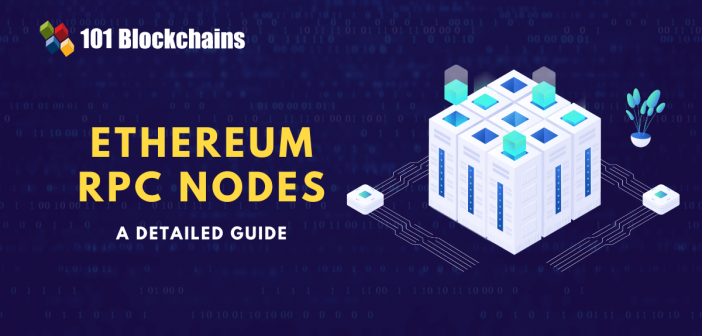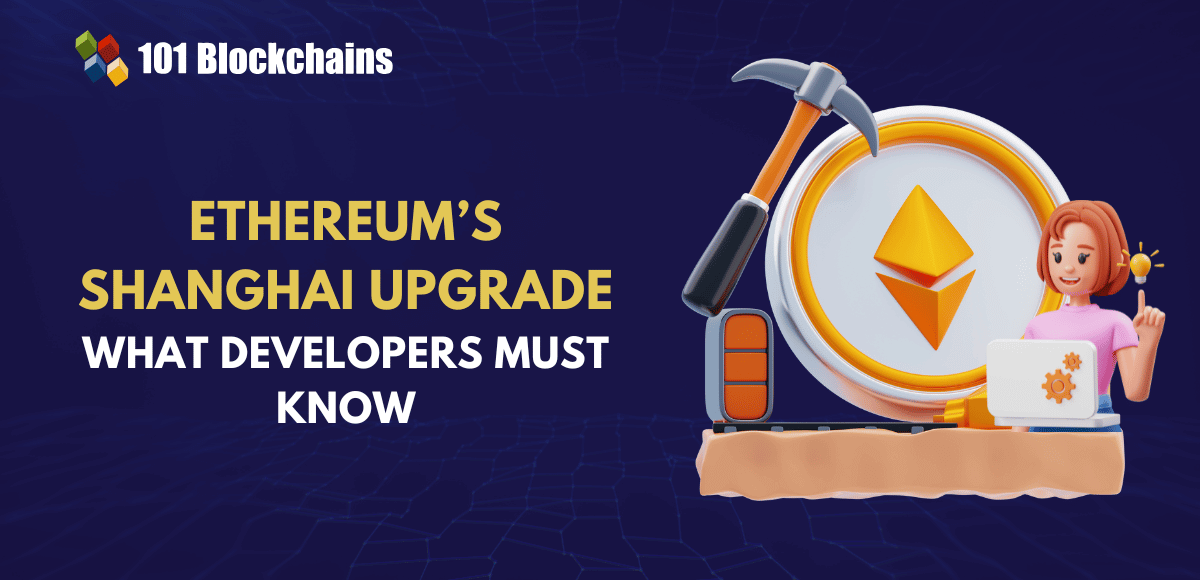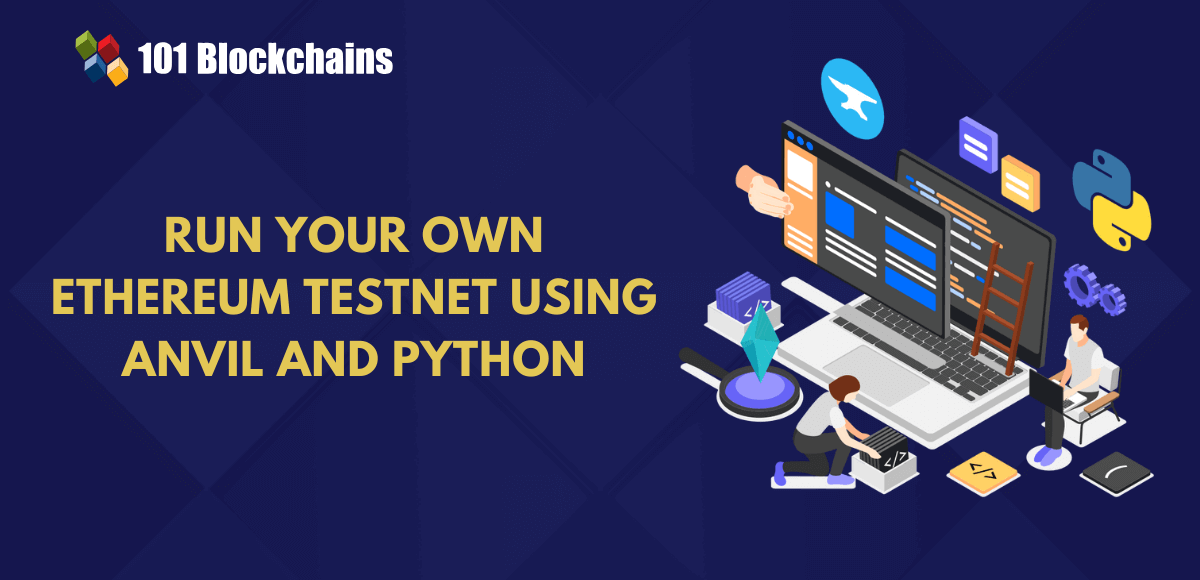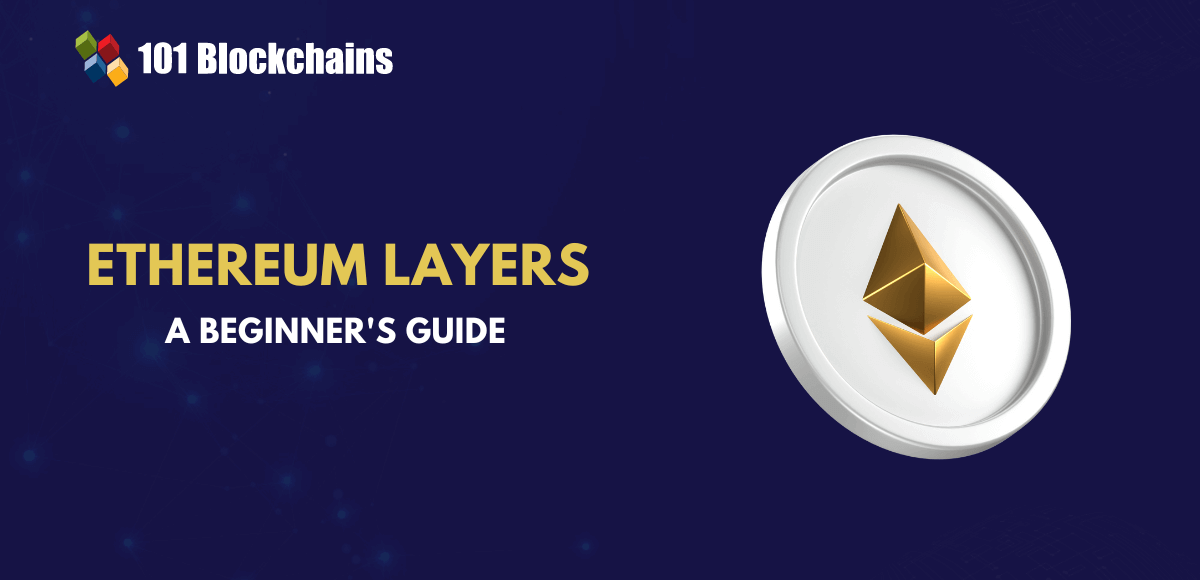Learn how blockchain truly works, master key definitions, and uncover what makes smart contracts so "smart." Dive into the fundamentals, gain valuable insights, and start your blockchain journey today!

- Ethereum
Georgia Weston
- on March 03, 2023
A Guide to Ethereum RPC Nodes
Blockchain and web3 have enabled the possibilities for introducing decentralized apps in different use cases. The benefits of dApps have encouraged many businesses to pursue effective approaches for creating their own dApps. However, you must emphasize the essential tools required for creating dApps, such as Ethereum RPC nodes, which run on Remote Procedure Call protocols. What is the use of RPC nodes in Ethereum? The answer is evident in the simple structure of a decentralized application. Decentralized apps are similar to conventional applications, albeit with the ability to communicate with the Ethereum blockchain.
Decentralized applications need to interact with the Ethereum blockchain to read blockchain data or send transaction requests to the network. This is where RPC nodes come into play. The following post offers an introductory guide to the fundamentals of ETH RPC nodes and how they work. You can learn about the methods for running RPC nodes on the Ethereum blockchain with platforms such as Alchemy or run your own configuration.
Excited to build your skill in Ethereum development by leveraging the ethers.js library? Enroll Now in Ethers.Js Blockchain Developer Course!
Importance of RPC
Before diving into a guide to Ethereum RPC nodes, you need to understand the importance of RPC. Decentralized apps require data consistently from the blockchain for completing user requests like sending transactions, evaluating blockchain state, and retrieving block data. Nodes could achieve these functionalities through Remote Procedure Calls or RPC for connecting dApps to the blockchain. RPC nodes work to help web3 applications interact with blockchain networks and enable easier access to user data.
RPC or Remote Procedure Call refers to a lightweight software communication protocol that helps the client or dApp communicate with a remote program or server. The server could be hosted on a different network, and the client could connect with the server through RPC without the details of the server network. The use of RPC Nodes Ethereum explained comprehensively would point at examples of using RPC from a local computer for requesting resources from the remote server system.
After the client places their request, the request prompts the server for procedure execution through a subroutine. In the case of blockchain networks, a dApp needs data from the blockchain network for correct functioning. In the case of RPC client-server mode, the dApp serves as the client while the RPC node is the server.
Definition of Ethereum RPC Node
The most obvious highlight in a discussion about RPC nodes would draw attention to their definition. The answers to “What is an RPC node Ethereum?” would reflect the fact that RPC nodes are computers with blockchain client software. One example of an RPC node could point at servers that run Consensus Layer as well as the Execution Layer infrastructure on Ethereum blockchain.
You can come across multiple variants of nodes on Ethereum blockchain network, such as light nodes, archival nodes, and full nodes. On the contrary, Solana blockchain features a validator and RPC nodes. The validator nodes are responsible for running the Solana consensus protocol and earning rewards for block validation. The RPC nodes on Solana work as gateways for Solana dApps to obtain relevant blockchain information.
The discussion about any RPC Nodes Ethereum example would also help you learn about the significance of RPC endpoints. RPC endpoints are the network locations where a dApp sends RPC requests for accessing server data. Following the connection between dApps and RPC endpoints, users can carry out operations that rely on real-time access to blockchain data.
Any node with the required software installation could respond effectively to RPC requests. RPC endpoints operating on a node would generally include a service that helps dApps in retrieving blockchain information from users. Therefore, all the RPC endpoints work on RPC nodes and conversely, all RPC nodes feature RPC endpoints.
Start learning about second-most-popular blockchain network, Ethereum with World’s first Ethereum Skill Path with quality resources tailored by industry experts Now!
Types of Ethereum RPC Endpoints
The introduction to RPC nodes Ethereum explained for beginners would also highlight the types of RPC endpoints. Node RPC endpoints on the Ethereum network are broadly classified into two primary categories, such as public and private. In addition, alternative RPC endpoints also support the operations of public and private RPC endpoints. The alternative endpoints can help applications in the maintenance of backups with fault tolerance for RPC endpoints. Let us take a look at the functionalities of the different types of RPC endpoints.
-
Public RPC Endpoint
The outline of answers for “What is an RPC node Ethereum?” would obviously mention public RPC endpoints. Public RPC endpoints are shared and restricted resources operating on RPC nodes where any individual can make requests. However, public RPC endpoints do not support production-grade applications and lack customer support mechanisms. At the same time, public RPC endpoints do not have active developer infrastructure or scalability according to demands for running dApps. The public RPC endpoints are only suitable for allowing any individual to access data from the blockchain network.
Excited to learn the basic and advanced concepts of ethereum technology? Enroll Now in The Complete Ethereum Technology Course
-
Private RPC Endpoint
The next category of RPC endpoints is in a guide on ETH RPC Nodes points at private RPC endpoints. Such endpoints work on serving the needs of a specific dApp and avoid the requests by other programs. As a result, private RPC endpoints could offer better speed and consistency with RPC nodes. Private RPC nodes could operate at the request of users. In addition, the private RPC endpoints also facilitate the effective maintenance of explicit service-level agreements or SLAs, which guarantee higher performance.
-
Alternative RPC Endpoint
The alternative RPC endpoints serve as an important highlight in the guide to Ethereum RPC nodes owing to their functionality. Alternative RPC endpoints help in avoiding downtime as they work in the role of backup endpoints. The alternative RPC endpoints play a vital role in maintaining a smooth user experience in your dApps. The development of dApps with alternative RPC endpoints is one of the best practices for avoiding a single point of failure for dApps.
Build your identity as a certified blockchain expert with 101 Blockchains’ Blockchain Certifications designed to provide enhanced career prospects.
Working of Ethereum RPC Nodes
The next crucial aspect in any discussion on RPC Nodes Ethereum explained for beginners would focus on the working of RPC nodes. The definition of RPC nodes presents a general impression of how they work by connecting dApps to blockchain data. RPC nodes start working when a dApp begins a subroutine or a request for data from the Ethereum blockchain. Subsequently, the RPC node can obtain the necessary requests through the blockchain, followed by sending the required payload to the dApps. Here is a description of the driving force behind RPC nodes on the Ethereum blockchain network.
JSON-RPC Protocol
The foremost highlight in an Ethereum guide on the working of RPC nodes would focus on JSON-RPC protocol. It is a stateless and lightweight RPC protocol that can define different data structures and the relevant processing rules. JSON-RPC protocol is independent of the mode of transferring data as the concepts of JSON-RPC are applied in the same process as well as through HTTP and sockets. JSON-RPC leverages the JSON (RFC 4627) data format. The JSON-RPC protocol has also garnered popularity for its abilities in faster receipt and processing of data requests.
You can understand the foundations of JSON-RPC protocol more effectively by assuming the client-server model example. In the view of traditional client-server models, the dApp serves the role of the client, and the RPC endpoint works as the server. In this case, the Ethereum RPC nodes would use JSON-RPC to define specific methods used for requesting services from the node. Users can capitalize on the methods defined in the JSON-RPC API of the Ethereum blockchain for requesting blockchain data for dApps.
The next important highlight in the description of JSON-RPC protocol draws attention toward core methods. Ethereum features a diverse set of core methods that leverage JSON-RPC for obtaining data from the blockchain network. The JSON-RPC methods include gossip methods, history methods, and state methods.
The evaluation of the RPC node’s Ethereum example would highlight the ways in which each method works. For example, gossip methods help in tracking the head of the blockchain and finding the relevant blocks. On the other hand, state methods work on returning reports on the existing state of data on the whole blockchain. History methods, as the name implies, work on retrieving historical records for any block on the chain.
When a specific user action needs blockchain data, the client or the dApp will leverage JSON-RPC methods for initiating requests or subroutines. The dApp would utilize RPC nodes for making the requests, and the node would return the information required for dApps.
Best Practices for Using RPC Nodes
The guides on “What is an RPC node Ethereum?” also draw attention to best practices for using RPC nodes. How could a dApp developer use RPC nodes in their applications? The response to such questions points to three distinct practices use of private RPC endpoints, running self-hosted nodes, or sending traffic through public RPC nodes. Let us go through the details of best practices for using RPC nodes with different methods.
RPC Node Providers
The first course of action for using Ethereum RPC nodes points to using a private RPC endpoint from RPC node providers. One of the first benefits of choosing RPC node providers is the fact that they manage all the burden of setting up, managing, and maintaining nodes for your dApps. RPC node providers work on ensuring that the dApps run smoothly, and most of the web3 developers choose node providers.
Top blockchain node providers feature native integration of features for node setup and maintenance. As a result, they can help developers in saving time, money, and effort in creating innovative end-user solutions. The prominent RPC nodes Ethereum example would refer to Alchemy, which can offer Ethereum RPC node endpoints. Here are some of the steps for accessing the RPC node infrastructure of Alchemy.
- Start with creating an Alchemy account.
- Develop your dApp by using the “Create App” option in the dashboard.
- Provide a name for your dApp and choose the blockchain and network you want.
- Click on the “View Key” option on the dashboard and copy the URL of the new node to start sending RPC requests to the node.
The simple steps show how easy it is to start working with an RPC node provider for the Ethereum blockchain.
Curious to learn about blockchain implementation and strategies? Enroll Now in Blockchain Technology – Implementation And Strategy Course!
Running Self-Hosted RPC Node
The need for a self-hosted RPC node in a guide to Ethereum RPC nodes would reflect primarily on the benefits of control. Running your own node could feature certain tradeoffs as well as benefits. However, self-hosted nodes could offer vital support for web3 developers and technical teams in exercising complete control over the configuration of nodes. Here are some of the important steps in starting up your own ETH RPC nodes with a high-level description.
- The first requirement in setting up a self-hosted node is the definition of RPC node configuration. You must define the client implementation or the node client software for the execution layer and consensus layer. The RPC node configuration must also specify hardware and system environments as well as client settings.
- In the second step of setting up your RPC nodes, Ethereum explained you have to choose a guided setup service or install the node manually through a Command Line Interface or CLI.
- Finally, self-hosted nodes also emphasize on maintenance of your RPC node.
Sending Traffic through Public RPC Endpoints
The next popular best practice for using RPC nodes would focus on sending traffic through public RPC endpoints. Depending on the blockchain network, you could send requests through references to the blockchain docs for identifying public RPC endpoint offerings. Subsequently, you can use the URL for routing traffic through the public RPC endpoints. However, the rate limitations on public endpoints create challenges for dApp developers.
Start your blockchain journey Now with the Enterprise Blockchains Fundamentals!
Final Words
The working of RPC Nodes Ethereum example showcases effective ways for leveraging Remote Procedure Calls in dApp development. If you look closely, RPC nodes are essential requirements for spelling the future of web3 development. At the same time, the functionalities of public, private and alternative RPC endpoints prove their usefulness for developing dApps. The advantages of running nodes without any concerns of setup or maintenance with node providers could empower developers.
On the other hand, it is also important to understand the distinct best practices for deploying RPC nodes. Some methods have advantages as well as tradeoffs, depending on the desired use cases. Therefore, you must go through the RPC node documentation of Ethereum to find out more about its effectiveness. Learn more about the JSON-RPC API methods on Ethereum blockchain in detail with official Ethereum documentation.






